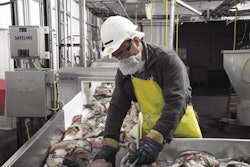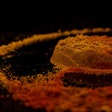Dry beans (kidney bean, haricot bean, pinto bean, navy bean, lima bean, butter bean , azuki bean, adzuki bean, mung bean, golden gram, green gram, black gram, urd, scarlet runner bean, rice bean, moth bean, tepary bean)
Dry broad beans (horse bean, broad bean, field bean)
Dry peas (garden pea, protein pea)
Chickpea, garbanzo, Bengal gram
Dry cowpea, black-eyed pea, blackeye bean
Pigeon pea, cajan pea, Congo bean
Lentil
Bambara groundnut, earth pea
Vetch, common vetch
Lupins
Minor pulses (lablab, hyacinth bean, jack bean, sword bean, winged bean, velvet bean, cowitch, yam bean)
*Recognized by the Food and Agricultural Organization of the United Nations (FAO)Nutrient analysis of pulses
Percentage of | Bean (pinto) | Pea | Chickpea | Lentil |
Moisture | 11.33 | 11.27 | 11.53 | 11.79 |
Protein | 21.42 | 24.55 | 19.3 | 24.95 |
Fat | 1.23 | 1.16 | 6.04 | 2.17 |
Ash | 3.46 | 2.65 | 2.48 | 1.94 |
Total dietary fiber | 15.5 | 25.5 | 17.4 | 10.8 |
US Department of Agriculture SR22



.png?auto=format%2Ccompress&fit=crop&h=167&q=70&w=250)
.png?auto=format%2Ccompress&fit=crop&h=167&q=70&w=250)










